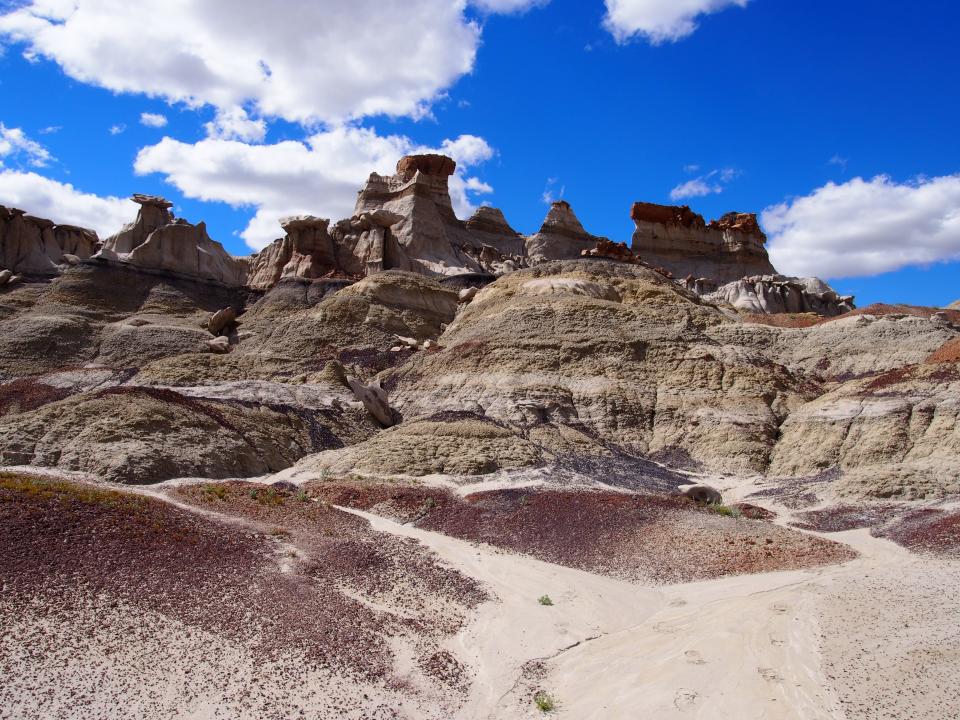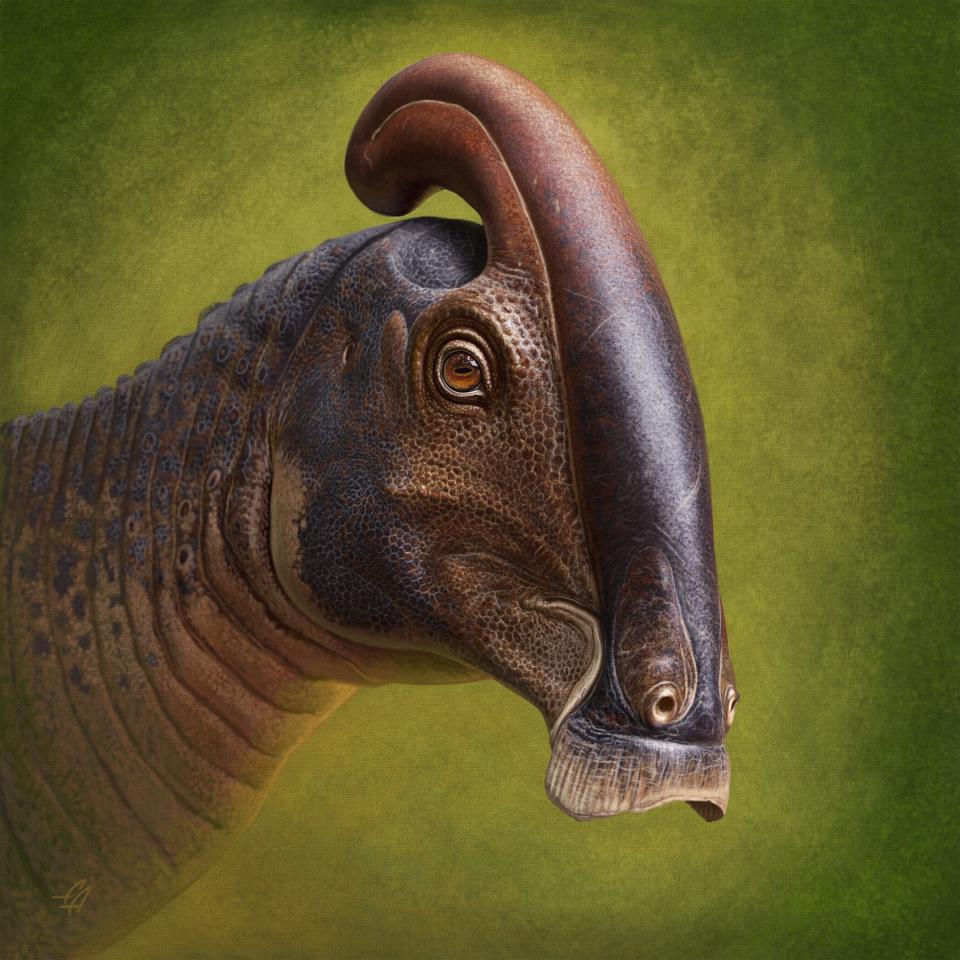Farmington City Council appropriates $70k for Bisti Wilderness exhibition designs
The Farmington Museum at Gateway Park someday could be home to a permanent exhibition highlighting the natural history of the Bisti/De-Na-Zin Wilderness Area if a plan presented to the Farmington City Council recently comes to fruition.
During the council’s Nov. 28 meeting at City Hall, councilors heard a presentation from Christa Chapman, the city’s assistant director of cultural affairs and marketing, and Tonya Stinson, executive director of the Farmington Convention & Visitors Bureau/Visit Farmington, that dealt with a proposal to create the exhibition. At the conclusion of the presentation, councilors voted unanimously to appropriate $70,000 in city money to help fund the creation of partial design documents for the project.
Chapman opened the presentation by describing the exhibition as a project that would tell a comprehensive story of the area — its natural history and its cultural history. The exhibition would be focused on the Bisti, which is widely regarded as one of the premier dinosaur-fossil hunting grounds in North America, and on the history of the Farmington area.
The timing for the project is good because it coincides with the design planning for Gateway Park, she said, referring to the city’s plans to construct a new park on space the city owns adjacent to the museum.

Stinson said the creation of such an exhibition would allow the city to capitalize on outside interest in the Bisti. In 2022 and 2023, she said, it was the top attraction frequented by nonregional visitors who made overnight stays in Farmington. She also said it is the local attraction most frequently asked about by visitors to her agency’s office, in phone calls to the city’s visitors center and in posts to her agency’s social media accounts.
Overseen by the federal Bureau of Land Management, the Bisti is a 45,000-acre badlands site south of Farmington highlighted by its distinctive, otherworldly rock formations. The site offers camping, hiking, horseback riding, photography and wildlife-watching opportunities.

It also regularly yields significant dinosaur fossil discoveries, including the skull of a new species of horned dinosaur that was written about in an academic journal in 2022 and a well-preserved, 75-million-year-old skull from an iconic, duckbilled dinosaur called a Parasaurolophus cyrtocristatus discovered there in 2017 that was only the second such specimen ever found.
The latter discovery stoked the imagination not just of the paleontology community, but of dinosaur enthusiasts worldwide, drawing considerable media attention, much of which was focused on the Bisti. Stinson sees those kinds of discoveries at the Bisti as a potential goldmine for local tourism.
“We’re looking at a way to drive visitation, create overnights, repeat stays, longer stays because (visitors) want to make a stop at this exhibit before they go out there,” she said.
While the Bisti already draws a significant number of visitors to San Juan County, she said, many of those visitors don’t stop in Farmington on their way through the Four Corners region. The addition of a large, eye-catching permanent exhibition on the site at the Farmington Museum would help the city attract more of those tourists, she said.
The exhibition would be designed to enhance the experience of Bisti visitors, leaving them better educated about the site’s history and better prepared to absorb and appreciate what they are seeing when they get there, Stinson said. The exhibition also would provide a dynamic experience for folks who aren’t physically capable of hiking through the Bisti but still want to learn about it, she said.
The focus on the Bisti would be one of only four elements of the exhibition, she said, explaining that the other three are the Native American and cultural history, the agricultural history, and the oil and gas history of the area.
Chapman said the museum has two galleries — the 5,000-square-foot Cassie Dallas Gallery where exhibitions culled from the museum’s permanent collection typically are displayed and a 7,500-square-foot gallery where large touring exhibitions are housed. The new exhibition would be located in the Cassie Dallas Gallery, she said.
Chapman said the exhibition itself would need to be created on an impressive scale in order for it to serve as a tourism draw.
“We’re really looking at creating an immersive experience that mirrors if not exceeds the quality in what we have been seeing in the recent touring exhibits (at the museum),” she said.
The first step in getting the project done is developing 30% design documents for the exhibition, she said. The Visit Farmington board already had earmarked $150,000 for the documents, Chapman said, and the council was being asked to pony up another $70,000 to partner with the agency on the project.
“We’ll use the design as an investment to seek grant and foundation funding to advance the project,” she said.
Deputy City Manager Julie Baird added that, pending the council’s approval, the project could be added to the city’s infrastructure capital improvement plan list, which would make it eligible to be considered for Destination Forward grant funding from the New Mexico Tourism Department.
Members of the council expressed considerable enthusiasm for the proposal.
Harkening back to conversations city councilors had engaged in years ago about what they would like the museum to become, Mayor Nate Duckett said, “This, to me, kind of sets the stage for that long-term vision. I think our museum needs an identity. I think our museum has great traveling exhibits … but I think having a permanent one that explores and celebrates the history of this area and the natural history of the area would complement a lot of the efforts that we have made here and the initiatives we have undertaken to grow what our identity is as a community.”
Duckett explained how impressed he was when he visited the Roswell Museum and Art Center, which is known for its comprehensive and highly regarded Southwest art collection. This project could serve as Farmington’s answer to that, he said.
“I think we need something like that in our own way that people could count on being there in the long term,” he said.
Councilor Janis Jakino cited the list of elements for which Farmington wants to be known — culture, history, tourism, oil and gas, and agriculture — and said this project checks all those boxes.
“I think this has the opportunity to do that for us, to tell that story and tell about our future,” she said. “Gateway Park is near and dear to my heart, so, therefore, I have full support of the project … ” she said.
Mike Easterling can be reached at 505-564-4610 or measterling@daily-times.com. Support local journalism with a digital subscription: http://bit.ly/2I6TU0e.
This article originally appeared on Farmington Daily Times: Bisti exhibit would be permanently displayed at Farmington Museum

